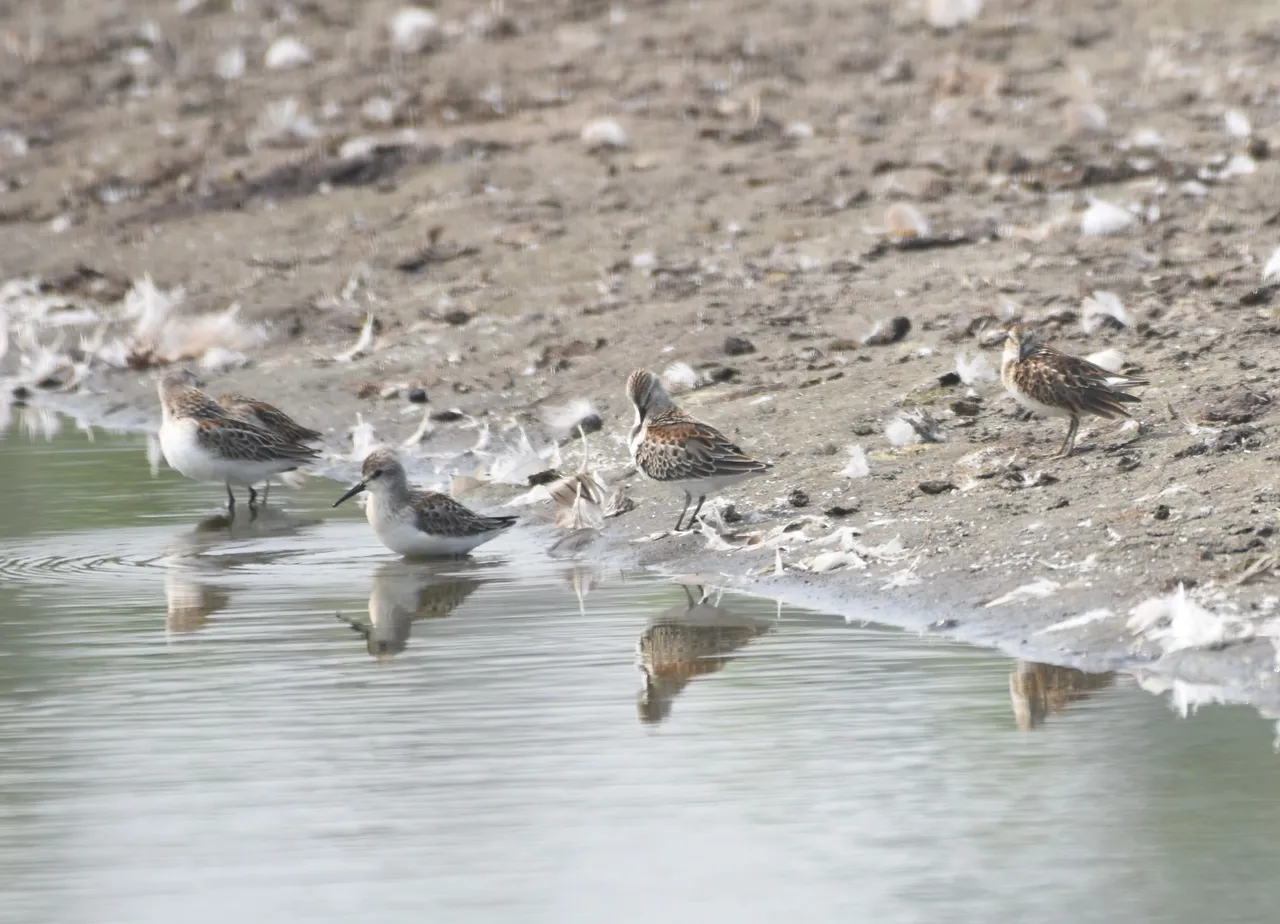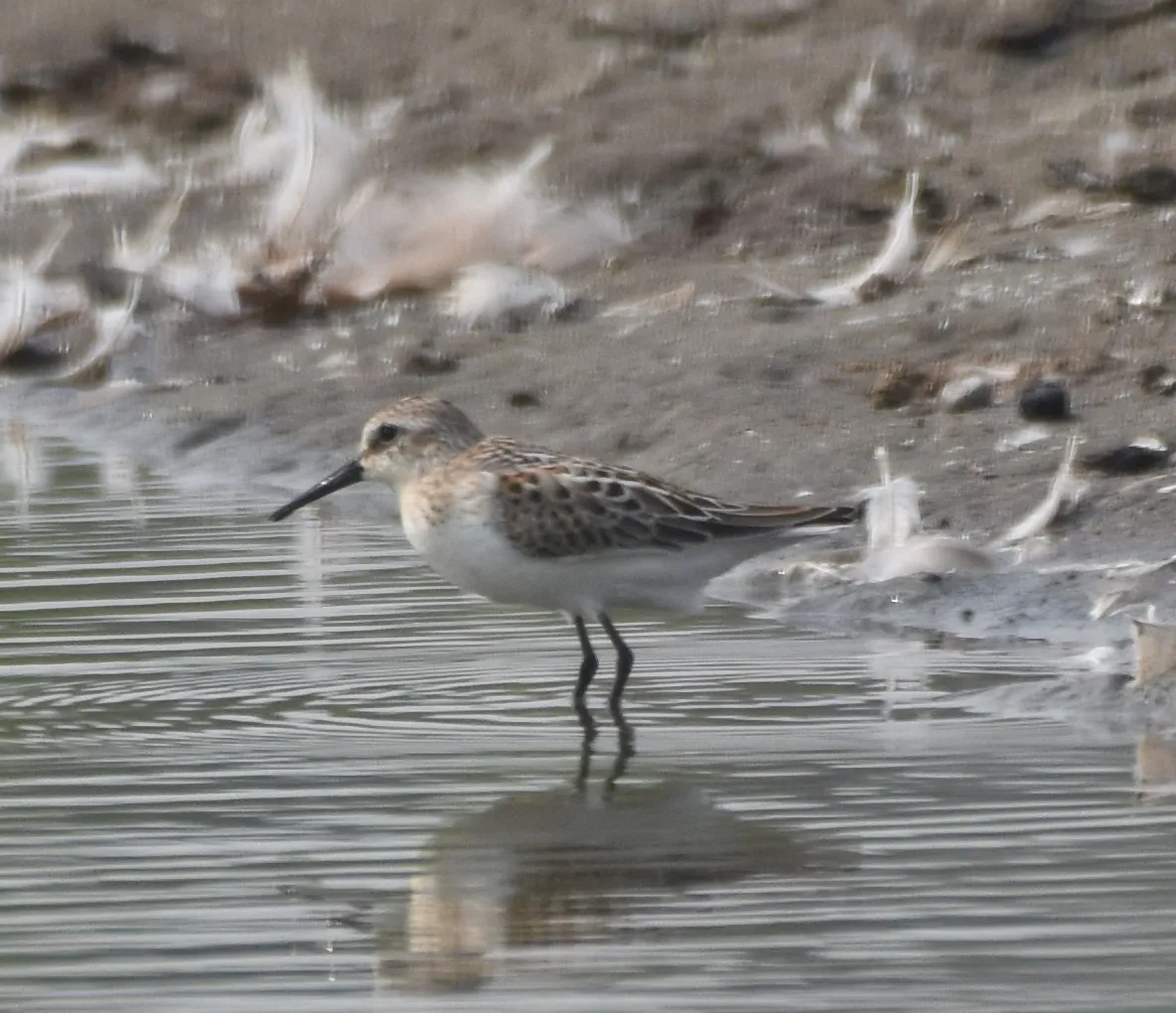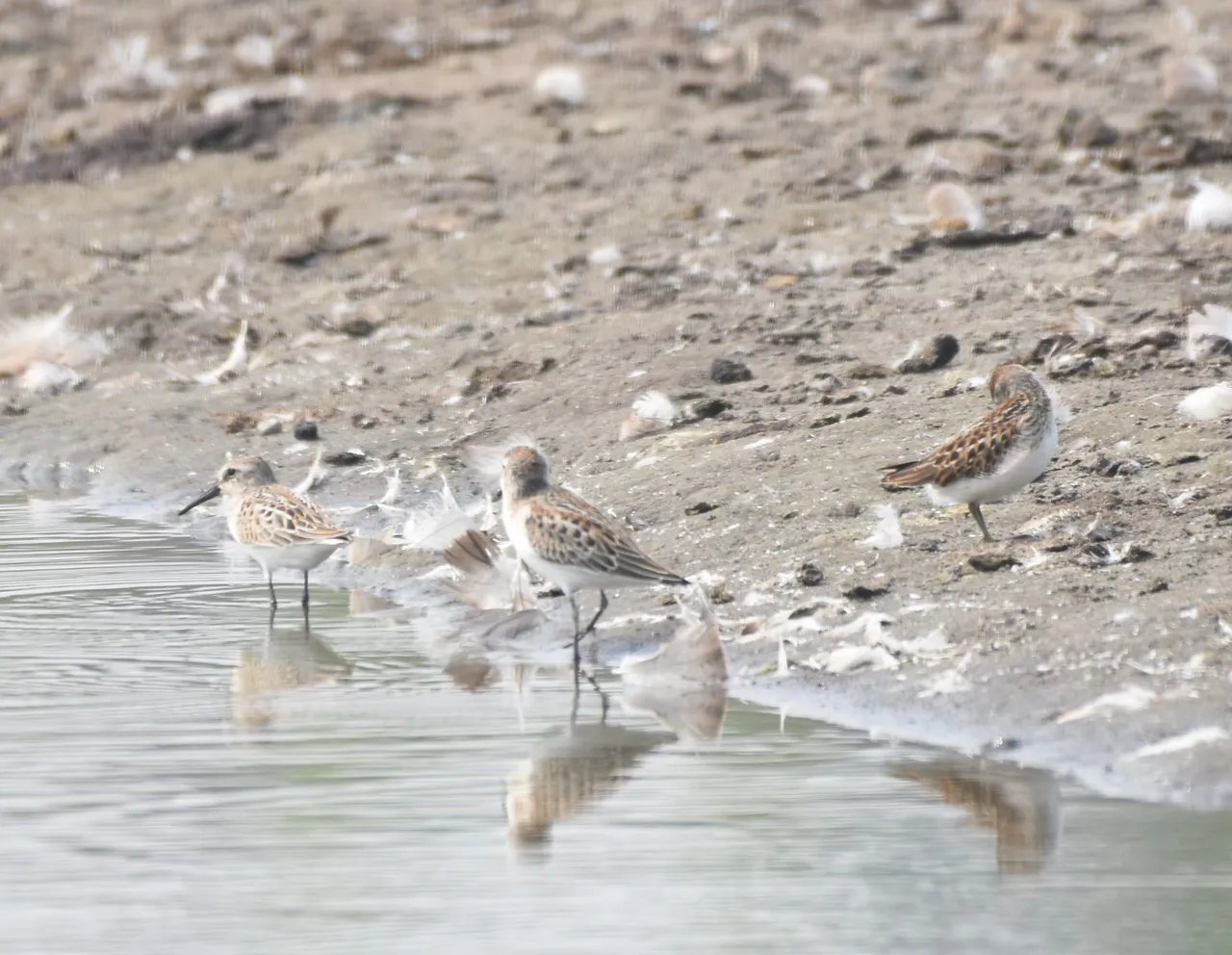
Western Sandpipers Calidris mauri and Least Sandpipers Calidris minutilla
I worked in Puyallup this afternoon, so on the way to work I made two stops at places I often see migrant shorebirds at this time of year. The amazing thing about most of our migratory shorebirds is that they breed in the Arctic or subarctic regions, and winter anywhere from southern Canada to Argentina. They rush north to breed, just as the tundra becomes habitable and the 24-hour days and melting permafrost leave conditions rich in food and time to feed. The young are born able to fend for themselves, and the adults breed, lay eggs, incubate the eggs, and after the young have hatched the adults migrate south. They leave the young to feed, grow, and then migrate south themselves without adults as guides. They have an innate ability to navigate the thousands of miles from the place they were born to where they need to winter. This results in two waves of fall migrants in our area. First the adults in worn plumage come through, followed by the crisply plumaged juveniles. The birds above are all juveniles. Note that every feather looks fresh and perfect, without any sign of wear like frayed feather edges, etc.

In this Western Sandpiper note the longish slightly drooping bill and reddish scapular feathers, and the crisply marginated body feathers telling us it is a juvenile.

A closer look at the peeps. Note the two on the left are Western Sandpipers with black legs and reddish mostly contained in the scapular area, and the one on the left is a Least Sandpiper, with yellowish legs, and the reddish color more diffuse on the back and head.
Good birding. Steem on!